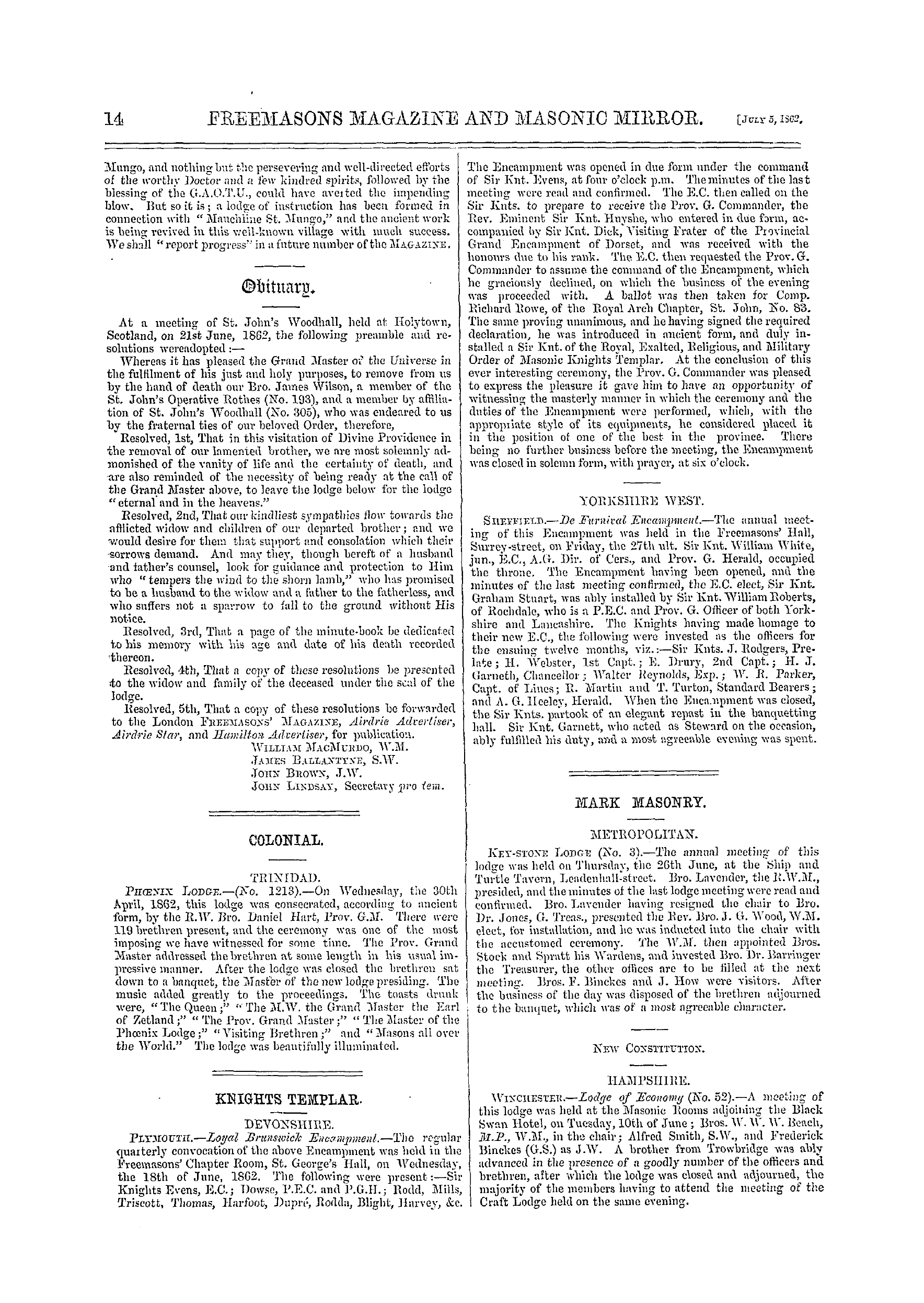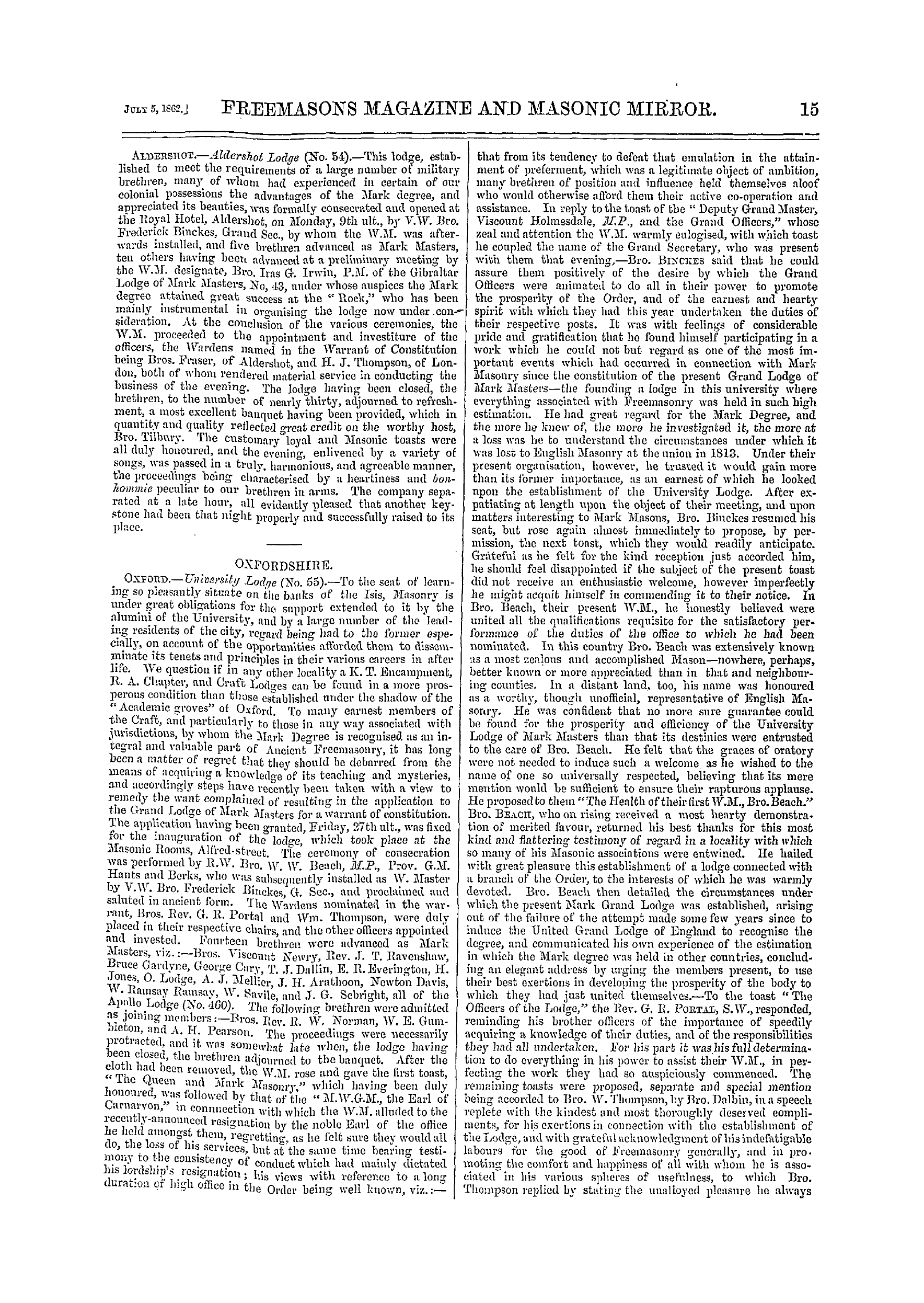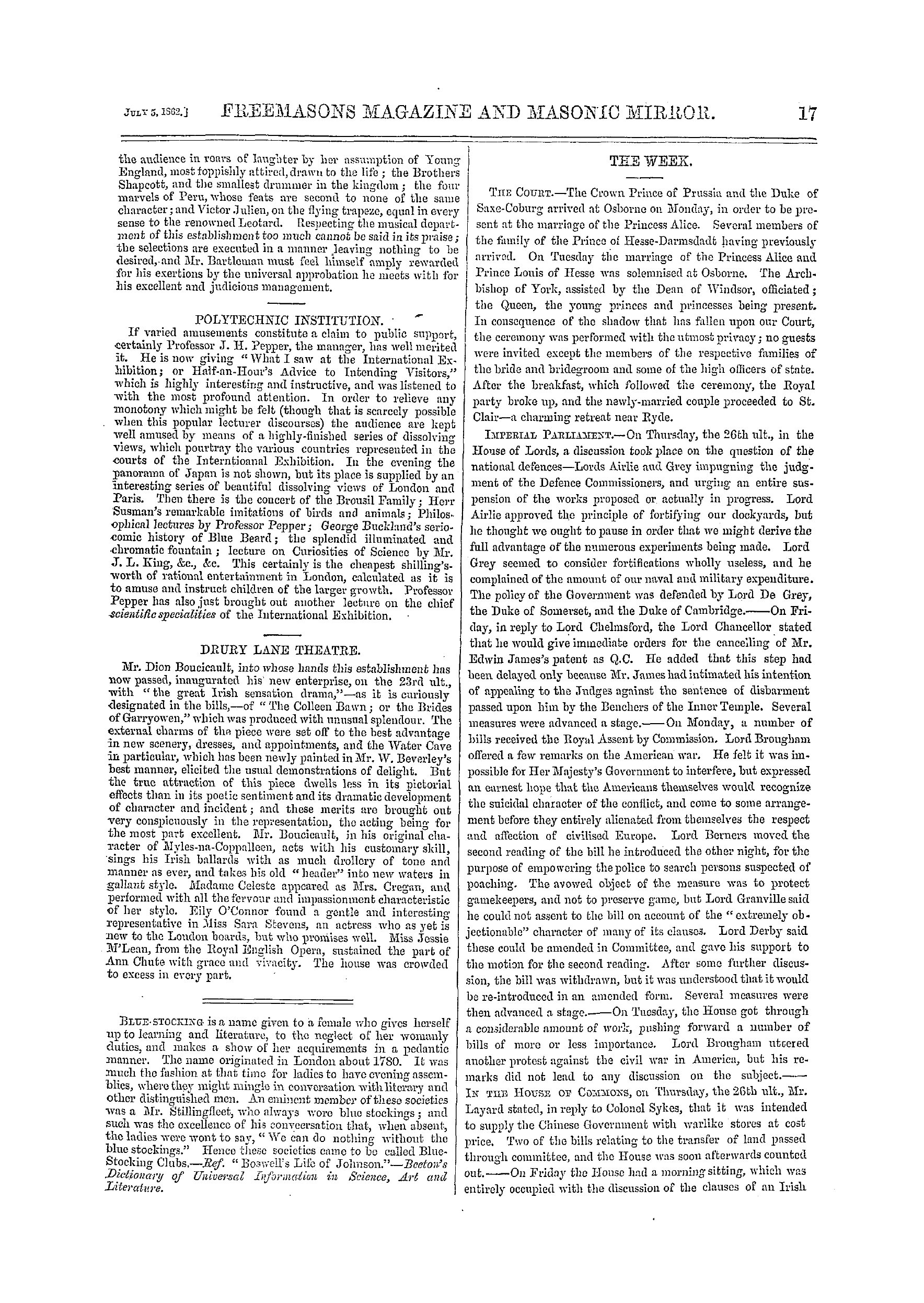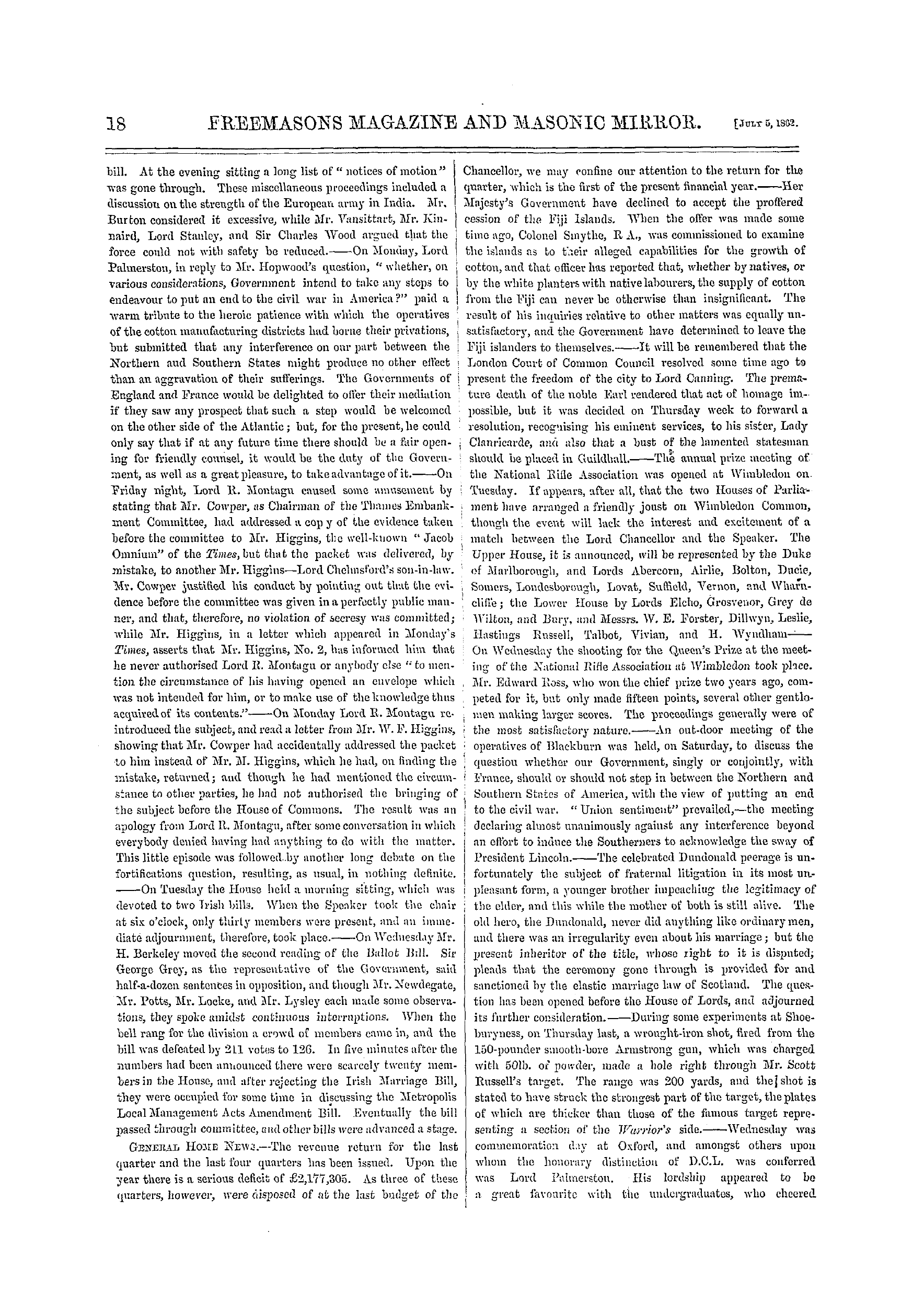-
Articles/Ads
Article KABBALISM, SECRET SOCIETIES, AND FREEMASONRY. ← Page 2 of 2 Article KABBALISM, SECRET SOCIETIES, AND FREEMASONRY. Page 2 of 2 Article ART AND MANUFACTURE. Page 1 of 3 →
Note: This text has been automatically extracted via Optical Character Recognition (OCR) software.
Kabbalism, Secret Societies, And Freemasonry.
his fathers before it . Tho long captivity , and the vcry gcneral previous neglect , had , no doubt , rendered it a difficult matter to follow accurately tho requirements of the law ; besides , the loss of many parts of tho Divine furnishing of tho Temple necessitated a certain adaptation to circumstances , not experienced before ; all this gave
birth to a study of the laiv , such , as had been unknoAvn to older Israel .- orders of scribes , doctors , and rabbin , noiv begin to appear , and learning to bo valued . Again , an impression ivas gaining ground that the law ivas a perfect system of theology , and had the pi-omisc of eternal life attached to it ; that , being a Divine revelation , it contained the ivhole cycle of Divine Avisdom : this latter ,
not to be found in the mere bare command , ivas to be sought out by intense study ; that then God ivould open the eyes'of the student to 'sec the wondrous things of His law ; ' added to this , that tho Jen- probably brought back with him a knowledge of astronomy , perhaps astrology ; of magianism , perhaps of magic ; and ive see sufficient materials , as ivell as sufficient predisposition , to
create Kabbalism . Viewed in this light , it appears as tho spontaneous growth of a people Avho noiv acknoivledgecVtho Divine injunction to study their rclgion , aided by the feeling so strong in human nature , to find out the mystery of one ' s own being . Another element of equal , if not superior importance to the former , was introduced by the Alexandrian
Jews ; this colony , founded by Alexander the Great , enlarged by Ptolemy Lagns . soon lost all knowledge of their own language , and spoke only Greek ; Avith the latter language flowed in also a knowledge of Greek philosophy . " From this period there can be no doubt that the doctrine of the Jews was known to the Egyptians ; and , on the other hand , that Pagan philosophy was known to the . Tews . Grecian
wisdom , corrupted by being mixed with the Egyptian and Oriental philosophy , assumed a new form in the Platonic school ot Alexandria . This school , by pretending to teach a sublimer doctrine concerning God unci Divine things , enticed men of
different countries and religions , and , among the rest , the Jews , to study its mysteries , and to incorporate them with their own . Tbe " symbolical method of instruction , wliich liad been in use from the most ancient times among the Egyptians , was adopted by the Jews ; and it became a common practice among them to put an allegorical interpretation upon their sacred writings . Hence , under the cloak- of symbols , Pagan philosophy gradually t into the Jewish schools ; and the Platonic doctrinesmixed
crep , first with the Pyth . i . ' . rorie , and afterwards with the Egyptian and Oriental , wore blended with their ancient faith in their exp lanations of the law and the traditions . The society of the 'JEherapeutcc . . . ivas formed after the model of the Pythagorean discipline .- Aristobnlus , Pliilo , and others studied the Grecian philosophy , and the Kabbalists formed their mystical system upon the foundation of the tenets taught in the
Alexandrian schools . " * The first community that adopted a " mystery" ivas that of the Essenes : those recluses , of Avhom AVO first find mention in the times of the Maccabees , appear to have had their origin in Egypt , from whence they drew their peculiar opinions ; they then came and settled in the hill country about Jordan : they enforced celibacy ,
had a community of goods , and practised great austerities , especially on the Sabbath . To be admitted into their society the candidate had to undergo two years ' probation and instruction within the college ; after this , he Avas received as a brother , Avith a solemn oath to conform to the discip line and observe the rules of the community : to guard its sacred books , ancl the names of the
angels , aud not to divulge its mysteries . Another class of these recluses is mentioned by Philo under the name of Therapeutic ; their religion ivas essentially contemplative , and their interpretation of Scripture allegorical . It was from these various elements that Kabbalism arose . "The system maybe described as philosophico-roligious , professing to enter into and explain tho mysteries concerning God , angels , demons , man—both soul and bod A" —his oriqin , his end ; in a word , very similar to the
Kabbalism, Secret Societies, And Freemasonry.
speculations of Plato and other heathen philosophers , only that the Kabbalist had actually , which AA'as wanting to them , a Divine revelation to rest upon . His grancl mistake ivas , that be looked upon the Old Testament as a final and complete revelation , and as containing an entire system of philosophic theology . We shall see presently that ho not only supplemented Divine reA'elation Avith
other systems , but that he actually founded his idea of creation on the theology of Zoroaster , and , by adopting the doctrine of emanations and metempsychosis , rendered Pantheism tho inevitable result of his system . Assuming , as ive think Ave may safely do , that Kabbalism developed itself after tho return from Babylon , wc can easily imagine how , when the conquering arms of Persia introduced
the religion of Zoroaster , ivhieh probably supplanted the older idolatry of Babylon , the captive Jew Avould imbibe something of a religion which concurred ivith his own in rejecting idols , and approximated to die Mosaic account of the creation ; and how he would bo inclined to look at it , not as a thing of heathen im-ention , but as being the recovery of a long-lost tradition . Ko Kahbalistic book
was , however , written before the first century ; whatever had been taught before that , had been like the Mischna , merely oral . The two oldest are the Sepher Jetzirah ( Book of the Creation ) , and tho Sepher Zorah ( Book of Light ) . The exact date of these books is uncertain . Jetzirah is mentioned as a ivell-known hook in both the Talmuds . . Kabbalists tell us that ifc ivas written by the
Patriarch Abraham ; most probably it was composed by the Eabbi Akibah . Zohar is commonly attributed to Simeon ben Jocka'i , Avho , living at tho time of the destruction of Jerusalem by Titus , and by him condemned to death , concealed himself in a cave , ivhen he Avas A-isited by the Prophet Elijah , ivho , instructing him in Kabbalism , enabled him to write the book . The early date of
this book is doubted by Franck , * because it is not , like tho Jetzirah , alluded to in the 'Talmud , nor , as he declares , until the thirteenth century . Into this investigation we do not intend to en tor ; we are , hoivcvei-, sure of one thing , that , ivhatever may be the date of tho first Book of Zohar , the present book has received very considerable additions . ( To be continued !)
Art And Manufacture.
ART AND MANUFACTURE .
When , any object of use or luxury is frequently demanded , the making of ifc begins to assume that regular and systematic form ivhieh wc call manufacture . Articles that aro seldom Avanted , or which have some peculiarity of their oivn , are usually said to be made , while those AA'hich , like soldiers' uniforms , arc made iu largo numbers , and of certain specified sizes , arc said to be manufactured .
This broad distinction betivecu making and manufacturing is one that we do Avell to bear in mind , because the application of art to handiwork is governed by tivo essentially different principles , according as tho work to be done is or is not a piece of manufacture . In the one case the handicraftsman must be an artist , in the other it is the maker of tho original pattern , and not the
actual handicraftsman , in Avlioin the feeling and skill of an artist aro required . Let us , for instance , compare ornaments in Avrou . gl _ . fc and cast iron . The . workmen engaged upon a piece of ornamental ivrought iron Avork may or may not haix- originated the entire design . He may or may not work from a sketch , a draiving , a model , or even a completed piece of iron work . In any case ,
hoAvevcr , the character of tho completed Avork depends not a little upon his artistic feeling and skill . If he have an orig inal in tho same metal before him , the degree in Avhich he ivill catch its spirit and reproduce ifc depends entirely upon his skill and cunning . With cast iron , however , the workman has a A'cry subordinatc part to p lay . A pattern is put into his
Note: This text has been automatically extracted via Optical Character Recognition (OCR) software.
Kabbalism, Secret Societies, And Freemasonry.
his fathers before it . Tho long captivity , and the vcry gcneral previous neglect , had , no doubt , rendered it a difficult matter to follow accurately tho requirements of the law ; besides , the loss of many parts of tho Divine furnishing of tho Temple necessitated a certain adaptation to circumstances , not experienced before ; all this gave
birth to a study of the laiv , such , as had been unknoAvn to older Israel .- orders of scribes , doctors , and rabbin , noiv begin to appear , and learning to bo valued . Again , an impression ivas gaining ground that the law ivas a perfect system of theology , and had the pi-omisc of eternal life attached to it ; that , being a Divine revelation , it contained the ivhole cycle of Divine Avisdom : this latter ,
not to be found in the mere bare command , ivas to be sought out by intense study ; that then God ivould open the eyes'of the student to 'sec the wondrous things of His law ; ' added to this , that tho Jen- probably brought back with him a knowledge of astronomy , perhaps astrology ; of magianism , perhaps of magic ; and ive see sufficient materials , as ivell as sufficient predisposition , to
create Kabbalism . Viewed in this light , it appears as tho spontaneous growth of a people Avho noiv acknoivledgecVtho Divine injunction to study their rclgion , aided by the feeling so strong in human nature , to find out the mystery of one ' s own being . Another element of equal , if not superior importance to the former , was introduced by the Alexandrian
Jews ; this colony , founded by Alexander the Great , enlarged by Ptolemy Lagns . soon lost all knowledge of their own language , and spoke only Greek ; Avith the latter language flowed in also a knowledge of Greek philosophy . " From this period there can be no doubt that the doctrine of the Jews was known to the Egyptians ; and , on the other hand , that Pagan philosophy was known to the . Tews . Grecian
wisdom , corrupted by being mixed with the Egyptian and Oriental philosophy , assumed a new form in the Platonic school ot Alexandria . This school , by pretending to teach a sublimer doctrine concerning God unci Divine things , enticed men of
different countries and religions , and , among the rest , the Jews , to study its mysteries , and to incorporate them with their own . Tbe " symbolical method of instruction , wliich liad been in use from the most ancient times among the Egyptians , was adopted by the Jews ; and it became a common practice among them to put an allegorical interpretation upon their sacred writings . Hence , under the cloak- of symbols , Pagan philosophy gradually t into the Jewish schools ; and the Platonic doctrinesmixed
crep , first with the Pyth . i . ' . rorie , and afterwards with the Egyptian and Oriental , wore blended with their ancient faith in their exp lanations of the law and the traditions . The society of the 'JEherapeutcc . . . ivas formed after the model of the Pythagorean discipline .- Aristobnlus , Pliilo , and others studied the Grecian philosophy , and the Kabbalists formed their mystical system upon the foundation of the tenets taught in the
Alexandrian schools . " * The first community that adopted a " mystery" ivas that of the Essenes : those recluses , of Avhom AVO first find mention in the times of the Maccabees , appear to have had their origin in Egypt , from whence they drew their peculiar opinions ; they then came and settled in the hill country about Jordan : they enforced celibacy ,
had a community of goods , and practised great austerities , especially on the Sabbath . To be admitted into their society the candidate had to undergo two years ' probation and instruction within the college ; after this , he Avas received as a brother , Avith a solemn oath to conform to the discip line and observe the rules of the community : to guard its sacred books , ancl the names of the
angels , aud not to divulge its mysteries . Another class of these recluses is mentioned by Philo under the name of Therapeutic ; their religion ivas essentially contemplative , and their interpretation of Scripture allegorical . It was from these various elements that Kabbalism arose . "The system maybe described as philosophico-roligious , professing to enter into and explain tho mysteries concerning God , angels , demons , man—both soul and bod A" —his oriqin , his end ; in a word , very similar to the
Kabbalism, Secret Societies, And Freemasonry.
speculations of Plato and other heathen philosophers , only that the Kabbalist had actually , which AA'as wanting to them , a Divine revelation to rest upon . His grancl mistake ivas , that be looked upon the Old Testament as a final and complete revelation , and as containing an entire system of philosophic theology . We shall see presently that ho not only supplemented Divine reA'elation Avith
other systems , but that he actually founded his idea of creation on the theology of Zoroaster , and , by adopting the doctrine of emanations and metempsychosis , rendered Pantheism tho inevitable result of his system . Assuming , as ive think Ave may safely do , that Kabbalism developed itself after tho return from Babylon , wc can easily imagine how , when the conquering arms of Persia introduced
the religion of Zoroaster , ivhieh probably supplanted the older idolatry of Babylon , the captive Jew Avould imbibe something of a religion which concurred ivith his own in rejecting idols , and approximated to die Mosaic account of the creation ; and how he would bo inclined to look at it , not as a thing of heathen im-ention , but as being the recovery of a long-lost tradition . Ko Kahbalistic book
was , however , written before the first century ; whatever had been taught before that , had been like the Mischna , merely oral . The two oldest are the Sepher Jetzirah ( Book of the Creation ) , and tho Sepher Zorah ( Book of Light ) . The exact date of these books is uncertain . Jetzirah is mentioned as a ivell-known hook in both the Talmuds . . Kabbalists tell us that ifc ivas written by the
Patriarch Abraham ; most probably it was composed by the Eabbi Akibah . Zohar is commonly attributed to Simeon ben Jocka'i , Avho , living at tho time of the destruction of Jerusalem by Titus , and by him condemned to death , concealed himself in a cave , ivhen he Avas A-isited by the Prophet Elijah , ivho , instructing him in Kabbalism , enabled him to write the book . The early date of
this book is doubted by Franck , * because it is not , like tho Jetzirah , alluded to in the 'Talmud , nor , as he declares , until the thirteenth century . Into this investigation we do not intend to en tor ; we are , hoivcvei-, sure of one thing , that , ivhatever may be the date of tho first Book of Zohar , the present book has received very considerable additions . ( To be continued !)
Art And Manufacture.
ART AND MANUFACTURE .
When , any object of use or luxury is frequently demanded , the making of ifc begins to assume that regular and systematic form ivhieh wc call manufacture . Articles that aro seldom Avanted , or which have some peculiarity of their oivn , are usually said to be made , while those AA'hich , like soldiers' uniforms , arc made iu largo numbers , and of certain specified sizes , arc said to be manufactured .
This broad distinction betivecu making and manufacturing is one that we do Avell to bear in mind , because the application of art to handiwork is governed by tivo essentially different principles , according as tho work to be done is or is not a piece of manufacture . In the one case the handicraftsman must be an artist , in the other it is the maker of tho original pattern , and not the
actual handicraftsman , in Avlioin the feeling and skill of an artist aro required . Let us , for instance , compare ornaments in Avrou . gl _ . fc and cast iron . The . workmen engaged upon a piece of ornamental ivrought iron Avork may or may not haix- originated the entire design . He may or may not work from a sketch , a draiving , a model , or even a completed piece of iron work . In any case ,
hoAvevcr , the character of tho completed Avork depends not a little upon his artistic feeling and skill . If he have an orig inal in tho same metal before him , the degree in Avhich he ivill catch its spirit and reproduce ifc depends entirely upon his skill and cunning . With cast iron , however , the workman has a A'cry subordinatc part to p lay . A pattern is put into his


























